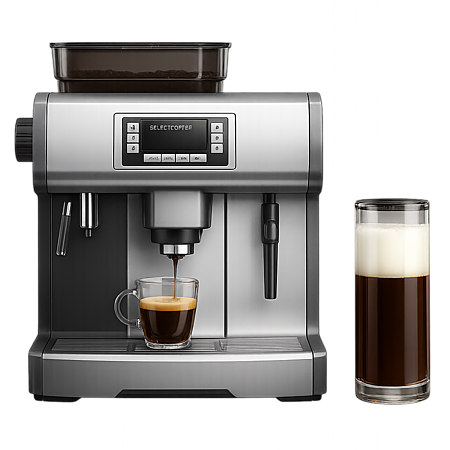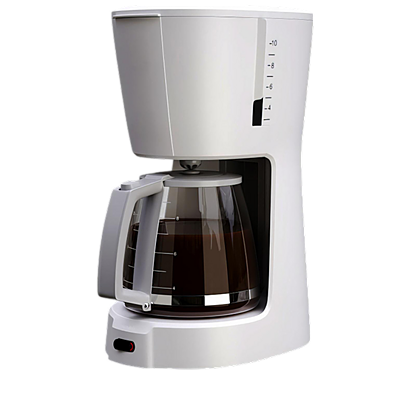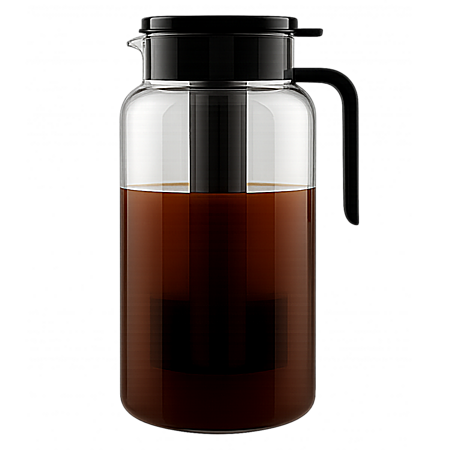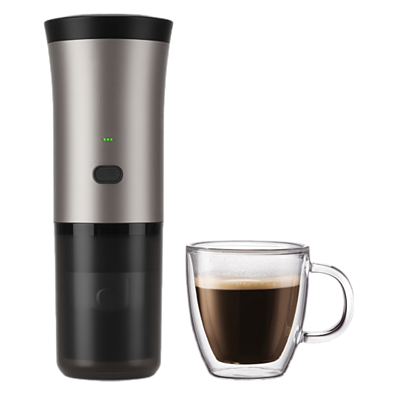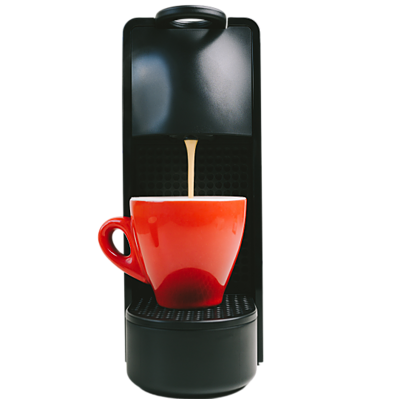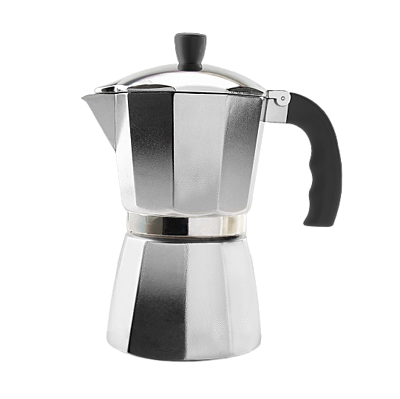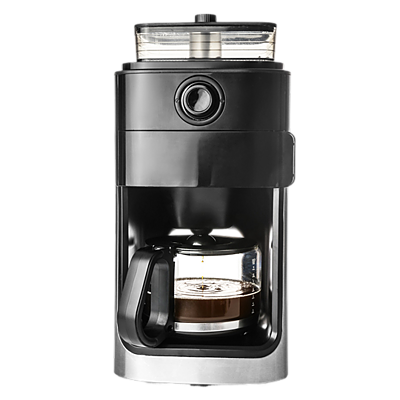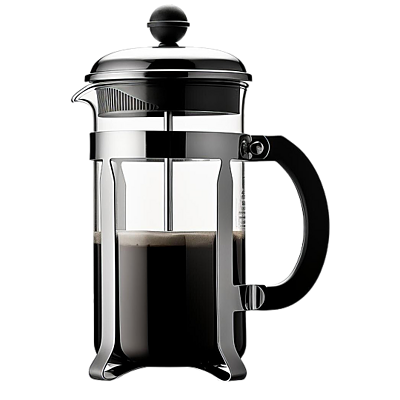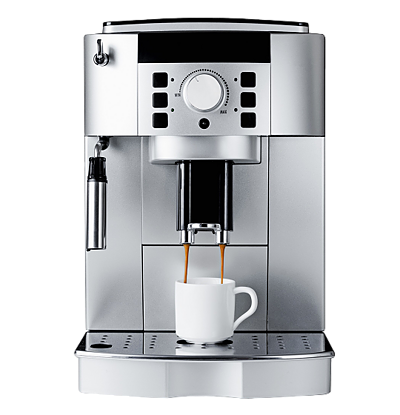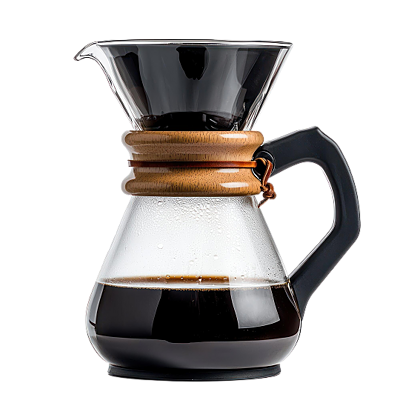Drip coffee makers are the reliable workhorse of home brewing. From weekday busy bees to weekend brunch slowpokes, they deliver convenience, consistency, and plenty of java to fuel your day. With models for every budget and lifestyle, from simple brewers to high-tech smart machines, there’s a drip coffee maker to meet your needs.
This buying guide will help you pick the right drip system for your taste, routine, and kitchen. And, if you’re interested in reading more about coffee machines in general and reviewing the different brands on the market, see my main buyer’s guide.
How to Buy a Drip Coffee Maker: Key Features to Consider
Brew Size & Carafe Capacity
Drip coffee makers vary widely in how much coffee they can brew at once, so it’s important to choose a model that matches your daily routine. Standard carafe capacities range from 4 to 12 cups, but keep in mind that a “cup” in coffee maker terms usually equals 5–6 ounces—not a full mug.
A 12-cup machine is ideal for households with multiple coffee drinkers or for entertaining, while a 4- or 5-cup model is better suited for small kitchens, couples, or occasional use.
Many modern drip machines offer adjustable brew size settings, letting you make just a single cup, half a pot, or a full carafe. This flexibility helps reduce waste and ensures you always brew just the right amount. Some models also include a separate setting for smaller volumes to optimize extraction when you’re brewing less than a full pot.
If you prefer brewing directly into a travel mug or need a machine that can handle both solo and group use, look for models with variable brew size options and removable drip trays. Matching capacity to your lifestyle helps avoid overbrewing, saves time, and ensures fresher coffee with each use.
Programmability & Controls
Programmable features add convenience and consistency to your daily coffee routine. Most mid- to high-end drip coffee makers include a 24-hour timer that lets you set a brew time in advance—perfect for waking up to fresh coffee without lifting a finger. This is especially useful for busy mornings or predictable routines.
Beyond timers, some machines offer customizable settings for brew strength, water temperature, and pre-infusion (bloom) time. Strength settings adjust how long water is in contact with the grounds, allowing you to choose between a lighter or bolder cup. Temperature control ensures water reaches the optimal brewing range (195–205°F), which directly affects flavor quality.
Control interfaces vary widely. Basic models use simple buttons and dials, while advanced machines feature digital displays, touchscreens, or even app connectivity. If ease of use is a priority, look for intuitive controls with clear indicators. If you value customization, choose a model with adjustable parameters.
Thermal vs Glass Carafe
The type of carafe your drip coffee maker uses affects how long your coffee stays hot and how it tastes over time. Glass carafes are common and sit on a warming plate to maintain temperature. They’re easy to clean, let you see how much coffee is left, and are usually lighter and less expensive. However, coffee left on the hot plate for too long can develop a burnt or bitter flavor after 30–60 minutes.
Thermal carafes are usually double-walled stainless steel and keep coffee hot through insulation rather than direct heat. They preserve flavor better over time and are ideal if you want to brew a full pot and drink it gradually without reheating. But they’re also heavier and often more expensive, though they do eliminate the need for a warming plate and are better for maintaining consistent taste and temperature.
If you drink coffee quickly or prioritize simplicity, a glass carafe works well. If you prefer to brew once and enjoy hot, fresh-tasting coffee over several hours, a thermal carafe is the better investment.
Water Reservoir & Filters
The water reservoir size and design affect both convenience and brew consistency. Larger reservoirs (usually 40–60 oz) are ideal if you brew multiple cups at once or throughout the day, while smaller ones suit compact kitchens or single users. Some reservoirs are removable, which makes filling and cleaning easier—especially if your machine is placed under cabinets. Others are built-in, requiring a carafe or pitcher to refill.
Clarity is also key. A visible water level indicator helps prevent overfilling or underfilling, which can affect brew strength and machine performance.
Many drip machines also include built-in water filters—usually charcoal-based—to reduce chlorine, odors, and mineral content. This improves flavor and helps prevent scale buildup, especially in areas with hard tap water. Some models use proprietary filters, so consider availability and replacement costs.
If water quality is inconsistent in your area or you want to maximize flavor and machine lifespan, a model with a replaceable water filter is worth considering.
Showerhead & Bloom Technology
The showerhead—the part that dispenses water over the grounds—shapes extraction quality in a drip coffee maker. A well‑designed, wide showerhead with multiple small holes distributes water evenly, saturating the entire coffee bed instead of channeling through a few spots. This uniform saturation prevents under‑extracted pockets and produces a balanced flavor.
Bloom (or pre‑infusion) technology mimics pour‑over technique by pausing the brew for 20–30 seconds after the first splash of hot water. During this pause, trapped CO₂ escapes and the grounds expand, allowing subsequent water to penetrate more evenly. Machines with automatic bloom cycles typically yield sweeter, more nuanced coffee—especially with freshly roasted beans that off‑gas heavily.
When comparing models, look for:
- Wide, multi‑hole showerhead for consistent coverage.
- Pre‑infusion setting (sometimes labeled “bloom” or “pulse brew”) with adjustable duration if you want fine control.
- Pulse‑spray systems that alternate short bursts of water and pauses; these enhance extraction even without a formal bloom phase.
Build Quality & Size
Build quality impacts both the durability and daily usability of a drip coffee maker. Look for machines with sturdy construction, tight-fitting parts, and reliable buttons or touch controls. Stainless steel and high-grade plastics are common materials that balance durability with weight. Avoid models with flimsy lids, loose carafes, or poorly sealed water reservoirs, as these can cause leaks or shorten the machine’s lifespan.
Size is another important factor, especially if counter space is limited. Compact models fit well in small kitchens, dorm rooms, or offices, but may have smaller reservoirs and fewer features. Larger machines often offer more capacity, programmable options, and bigger carafes but require more space—make sure to measure your available countertop area, including height clearance for opening lids or removing the carafe.
Cleanup & Maintenance
Regular cleaning is essential to keep your drip coffee maker brewing great-tasting coffee and running smoothly. Look for machines with removable, dishwasher-safe parts—such as the carafe, filter basket, and drip tray—to simplify daily cleanup. A model with a removable water reservoir makes it easier to rinse and refill without spills.
Descaling your machine every few months removes mineral buildup that can affect flavor and damage internal components. Many modern coffee makers include automatic descaling alerts or cleaning cycles to guide you through the process.
For optimal performance, wipe down exterior surfaces regularly and clean the showerhead to prevent clogs. If your machine uses charcoal water filters, replace them as recommended to maintain water quality.
Drip Coffee Maker Types: Choose by Features and Lifestyle
Choosing the right drip coffee maker depends on how much convenience and control you want.
Standard Auto-Drip Machines
Best for: Everyday drinkers looking for consistency with no extra effort.
Pros: Inexpensive, easy to use, easily found
Cons: Limited customization options
Push a button, have a pot. Ideal for the coffee traditionalist or frugal family.
Programmable Brewers
Best for: People who like their coffee waiting for them in the morning.
Pros: Timer, auto shut-off, multiple brew strength options
Cons: Slightly more expensive
Wake up to the smell of coffee without doing any prep work.
Specialty Certified Brewers
Best for: Coffee and flavor aficionados.
Pros: Better temperature control, quick brew times, excellent extraction
Cons: Costly and not as compact
These models are certified by the SCA (Specialty Coffee Association) of America and designed to duplicate a café quality experience.
Thermal Carafe Models
Best for: People who want coffee that stays hot for hours.
Pros: Eliminates hot plate, better flavor retention
Cons: Bulky and more expensive
A great choice for families or small offices that want hot coffee without the bitter taste.
Single Cup Drip Machines
Best for: People who like one cup without pods.
Pros: Doesn’t use wasteful capsules, brews directly into mug
Cons: Takes a little longer than pod machines
Great for people who love the taste of drip but only drink one cup at a time.
Advanced Features Worth Considering
- Pre-infusion or bloom control: Similar to pour over coffee brewing to optimize flavor
- Strength selector: Adjust brew strength to taste
- Temperature control: Target temperature for brewing is 195–205°F (degree of machine precision varies)
- Auto pause & pour: Pause the brewing cycle and remove carafe without drips
- Multiple brew sizes: Options to make a half-pot or a single cup of coffee
- Built-in grinder: Freshly ground beans equal fresher tasting coffee
- Wi-Fi/app control: Brew from the comfort of your bed
- SCA certification: Certifies a machine’s quality and brewing standards
Budget Breakdown: What to Expect
Drip coffee makers come in a wide range of prices, and understanding what each budget level offers helps you make an informed choice.
- Under $50: Basic models usually feature simple controls, smaller water reservoirs, and glass carafes. They’re suitable for occasional use or those new to drip brewing but may lack programmable settings or durability.
- $50–$100: Mid-range machines often offer larger reservoirs, better build quality, programmable timers, and strength control options. These models balance performance and convenience for everyday home use.
- $100–$200: Premium drip coffee makers include advanced features like precise temperature control, automatic bloom functions, stainless steel or thermal carafes, and more robust construction. They provide consistent, high-quality brews and are ideal for coffee enthusiasts.
- Above $200: High-end or smart coffee makers with app connectivity, customizable brew profiles, and professional-grade components fall into this range. These are designed for users who want maximum control and convenience.
Which Machine Matches Your Routine?
If you need a coffee maker that can accommodate different moods and schedules, consider how you like to brew your drip coffee:
- Constantly in a hurry? Opt for a model that is programmable with auto-start and a short brew cycle.
- Weekend coffee connoisseur? Select a specialty brewer that has bloom and temperature control.
- Making a large pot to share? Select a 10–12 cup machine with a thermal carafe.
- Is your kitchen small? Check out the footprint and make sure it has a front-fill reservoir.
- Want coffee-shop quality at home? Choose a SCA-certified brewer, like Bonavita or Technivorm.
- Eco-conscious? Purchase a machine with a reusable filter and charcoal water filter.
- Single household? Select a machine with a 1–4 cup setting, or buy a one-cup machine.
Is a Drip Coffee Maker Right for You?
A drip coffee maker is ideal for those who want a standardized, hassle-free system that can serve one or many. It’s consistent, scalable, and customizable to anything from the weekday morning rush to a laid-back Sunday brunch. It’s not for those who prefer total manual control or who only drink espresso. However, for those who want everyday convenience and quality, drip is the way to go.
For help choosing between specific brands, visit my main coffee maker buying guide for in-depth comparisons and a list of features every single serve coffee maker should have.


